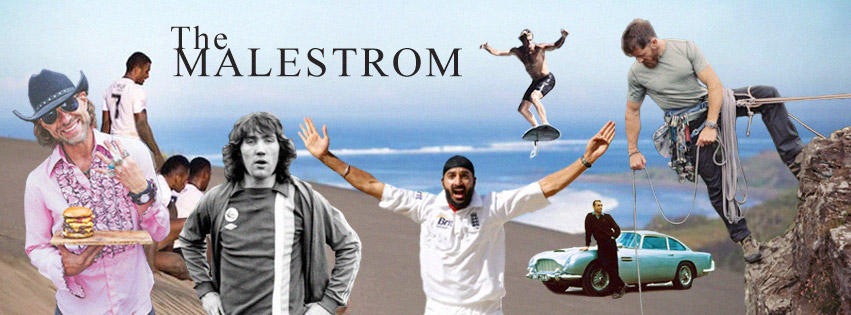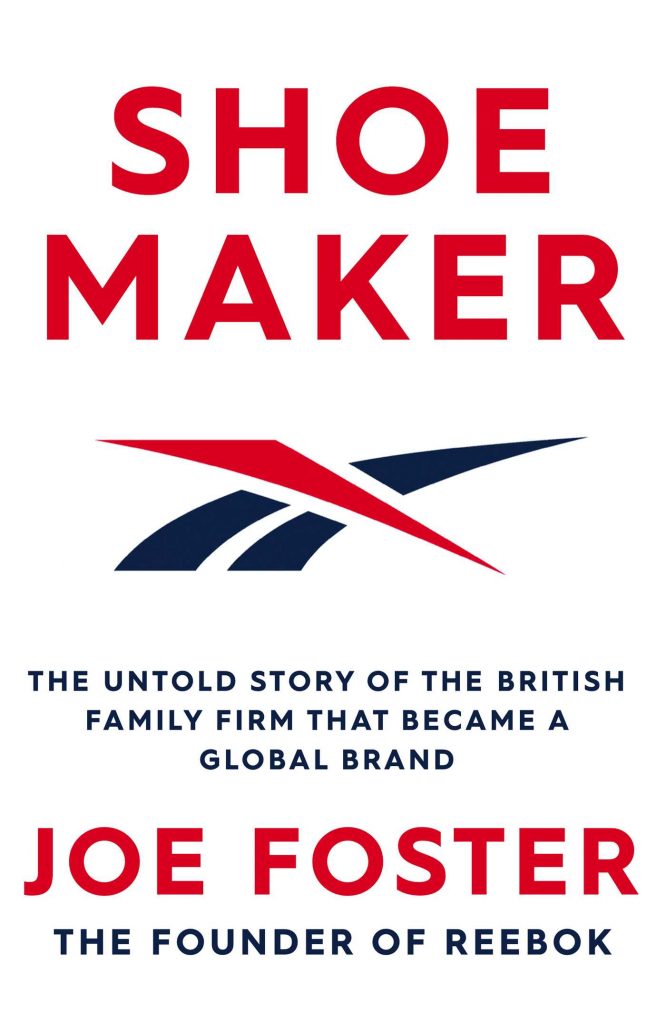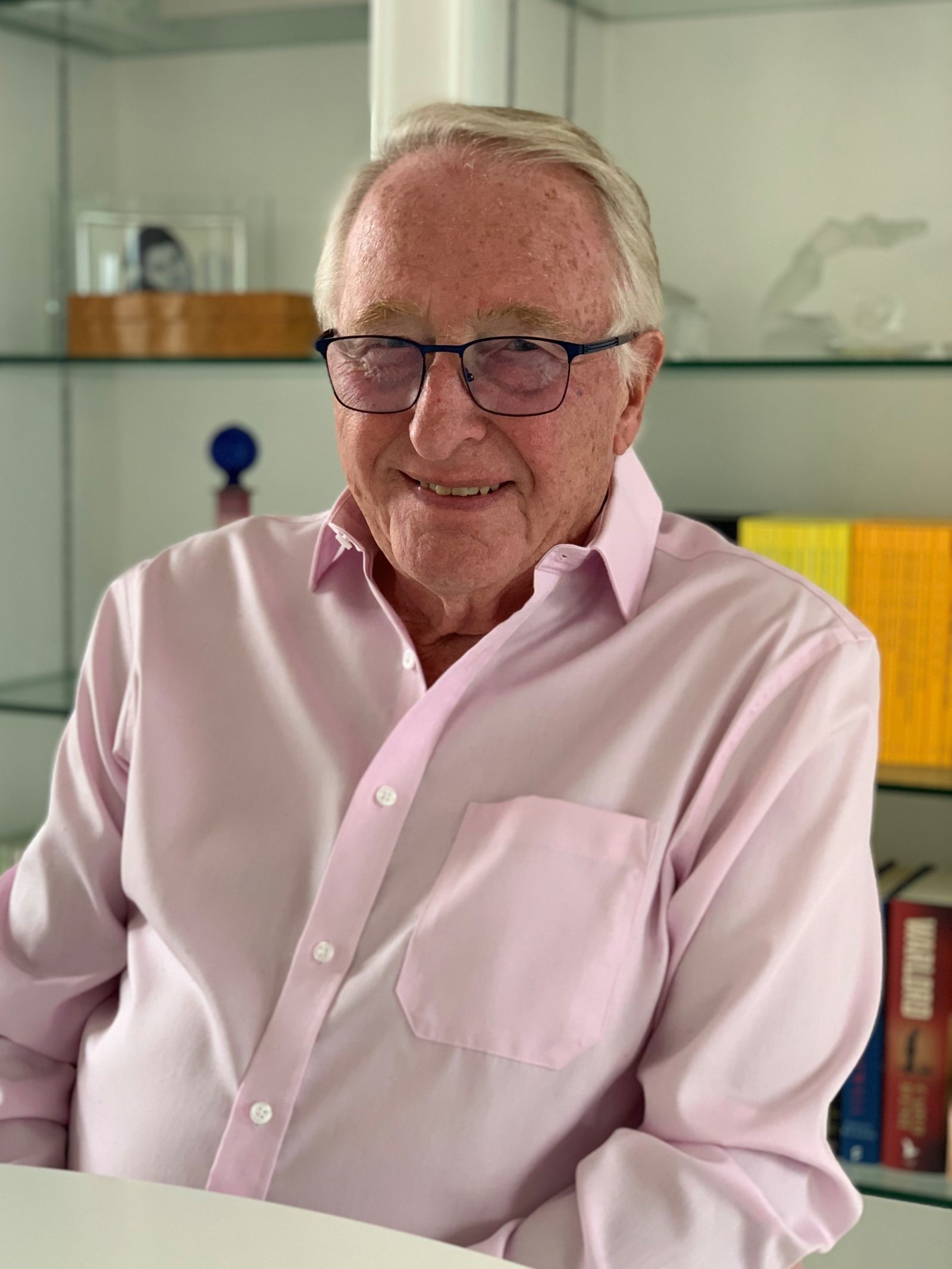
Sports wear brand Reebok needs no introduction. In fact if alien life forms do ever happen to land on this planet, given the seemingly intergalactic notoriety of the footwear giants, it’s likely even the little green men and woman will have heard of their world-beating trainers.
The figure behind the creation of Reebok is Bolton’s own Joe Foster. A man with the shoe business in his blood, with the Foster family hand-making running shoes out of their small factory since the late 19th century. Joe’s grandfather, the founder of J.W. Foster and Sons, even pioneered an early version of the spiked running shoe that athletes use to this day.
In the late 1950s with the family business growing stale and Joe’s father and uncle resisting any change, Joe and his brother Jeff decided to strike out on their own, setting up a new company inspired by the success of Adidas and Puma. While there were ups and downs along the way, by the 1980s Joe Foster’s vision and determination eventually led Reebok to incredible worldwide success after the brand were the first to latch onto the aerobics craze sweeping America.
With Joe’s remarkable book Shoe Maker having recently been released, which recounts in page turning detail how he built Reebok from the ground up, we sat down with Joe to learn about his beginnings, the role luck played in his life, the route he took to conquer America and the full 411 on exactly how he turned a small business based in Bury into a huge four billion dollar company.
The MALESTROM: I’d like to start with where it all began for you. You’re from a family of shoemakers, your grandad founded J.W. Foster and Sons. It’s always been in the blood. Do you feel like it was predestined in some way for you to be involved in the shoe business?
Joe Foster: It was either that or I was too lazy to do anything else! I finished college at 17 and went into business. At that age you’re more interested in girls, having fun and goodness knows what else. Of course at 18 they whipped me off into the RAF for a couple of years. I played badminton for most of that. So it was actually quite an enjoyable time.
It’s only after years away from home you begin to get serious, after you’ve spent two years looking after yourself. Mother’s not there, there’s no one to look after you, none of your friends. My brother Jeff was two years older than me. He was deferred so we almost went at the same time and came back at almost the same time.
After coming back from the forces our eyes had been opened with looking at life. We saw that J.W. Fosters had been failing. We were thinking come on guys what’s happening here? By that time we could stand up to father and say, look this isn’t good enough, we have to change this. But of course they didn’t, which was very sad. Then again, it was sad at the time, but we came up with a better product, a better name, something that was easy to say. Eventually Reebok. Which was a good name.
TM: It still must have been difficult to break away from your father and uncle. With you clearly wanting to stop that complacently you were seeing in them. But it must have been a difficult decision to strike out on your own?
JF: I guess when your pushed into a corner you just have to do something. They painted us into that corner. They wouldn’t move and they weren’t willing to change things even though the company was failing. We were young. I was only 23, Jeff was 25. We needed to do something.
Father and uncle didn’t get along together. There was six years difference between them. Once grandmother had gone that was it. They were just fighting. They didn’t speak to each other and on more than one occasion I had to drag them apart. You can’t build a company around that.
So whilst it might have been a wrench, we had to do it. Like I say, we were pushed into a corner. It was essential. We’d seen the change in the industry and we kept telling father. But when no one listens to you, then what can you do? We’d been away for two years, so we’d got our own confidence.
TM: There seemed to be a sort of sea change in yourself after you came back. You were a different person to some degree after national service …
JF: You learn to be self-dependent, self-sufficient. You can do something if you want to do it. All of a sudden you do things you never thought would happen. You’re actually in control of what you do. It took a while. We went to college and did some work, trying to learn to make more things than we had done on the shop floor at J.W. Fosters.
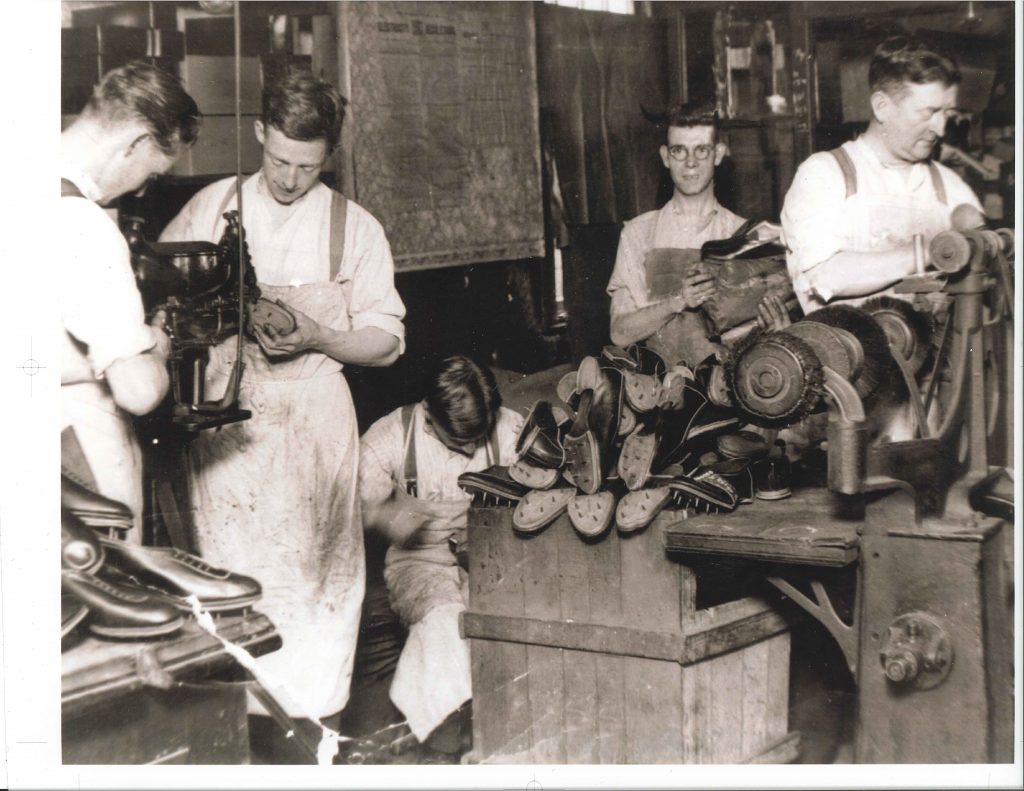
TM: With the new business, which was called Mercury Sports Footwear initially, you had a little bit of luck along the way. Of course there were ups and downs, but certainly some good fortune, such as your acquaintance with John Willie Johnson and his help with providing machinery for your factory. Do you feel luck played an important part in getting you on the road to success?
JF: When you look at it, you think how lucky we were. With timing we were lucky. You can’t choose to be in the running shoe business when running takes off massively in America. There were so many pieces of luck. And of course, many people in the UK went out of business because the shoe industry moved into Korea and Asia.
I happened to bump into John Willie. It was so odd really, because we had no money. As the saying goes, we had more guts than money. I sat next to John at these auctions and he never bid for anything. And if anything didn’t sell the auctioneer would just look at John Willie and he’d nod. That was it. So at the end of the auction, John would disappear into the office with the auctioneer. Obviously, they’d come to an agreement on what he would pay just to clear whatever they didn’t sell. He was a great fella and he became a very good friend.
The first time I wanted a machine. I said John can I buy that off you? He said, “No”. I said well, will you rent it me? He said, “No”. But then he said that I can have it, just give it back when your done with it. I had a lot of friends that helped in so many ways. People say you make your own luck and the harder you work the luckier you get.
I suppose the other thing is meeting people. There were so many nice people I met that were so helpful. They didn’t want anything, they just wanted to help. So it is luck, but it’s also meeting people and being affable. It’s being interested in what you do and what other people do. If you show that energy people latch on because they like that.
TM: There’s a sentence from the book where you write about how “playful creativity wasn’t stifled by the warnings of parents”. You seem to have kept that keen imagination all the way through your career. How important was it to think big in order to build Reebok into the brand as you did?
JF: I think the thing is, if you can get people around you and the right people, they help drive you and you drive them. Everyone has that excitement. You develop a winning culture. Whether somebody won a race in our shoes, then you get gold medals. It’s fantastic! And then World Records. It’s an amazing business to be in because you can kind of hit markers, you can reach up and see things. I guess there’s some industries where you turn around and it’s the same every 24-hours.
My brother Jeff loved to be in the factory. We never had a bad word together. My father and uncle couldn’t talk to each other. But Jeff and I, we got on so well. I think one of the things was that he loved the factory so much. He said you do everything else. So, I was less and less in there and more out and about developing the brand and relationships.
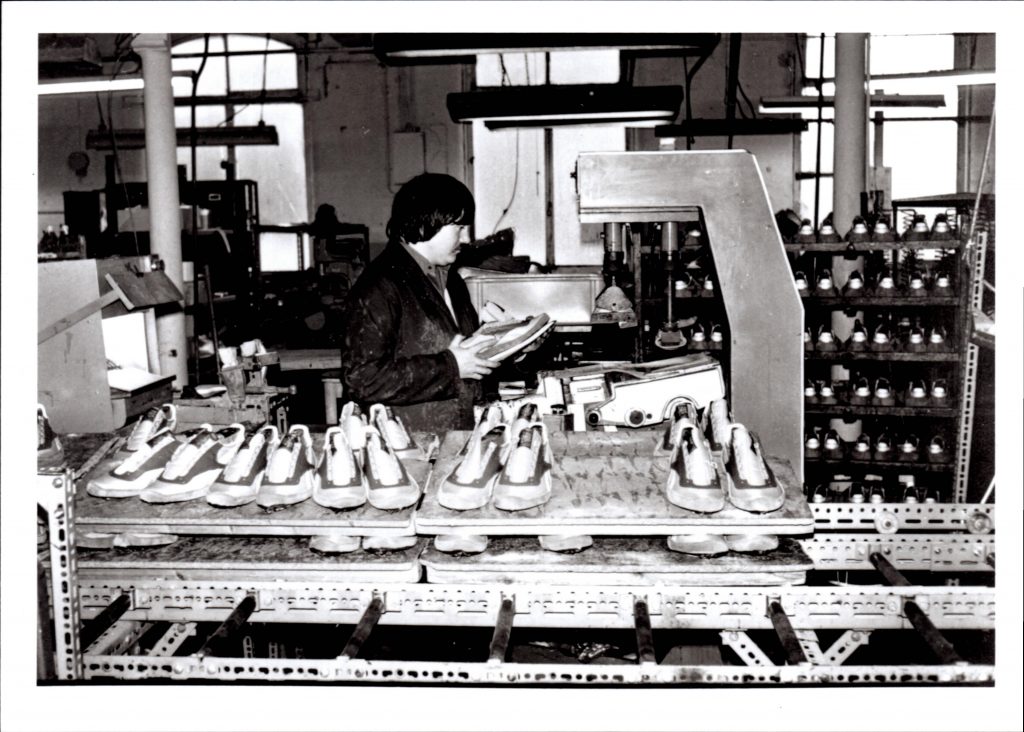
TM: in terms of the name change, that’s an interesting story. It was an enforced decision to change from Mercury Sports and an American dictionary that helped to choose the now infamous Reebok …
JF: It was yes. At the time, we didn’t think anything about the story, but it’s quite unique. I won this race at eight-years-old and went to collect my prize and what was it? A dictionary! I mean where’s the football guys? Also it was an American dictionary. These things are coincidences. It was the middle of World War 2, and I got not an Oxford English Dictionary, but an American Websters. Back in 1960 we needed to change the name, so I looked up the letter R. I thought that was a strong letter. I leafed through the letter R’s and found the word Reebok. It said it was a small South African gazelle. I thought fantastic.
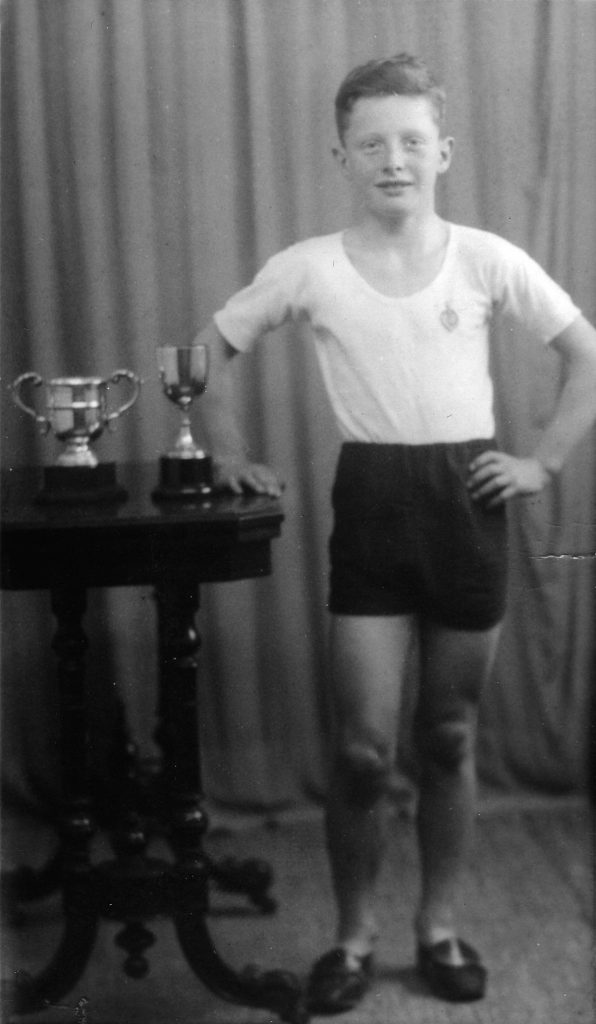
TM: Another part of the book that was a fascinating read was around your marketing strategy, where you enlisted amateur runners as sales reps. It was a genius idea and in a way echoed something your Grandad had done many moons ago …
JF: In my grandfather’s day, I don’t think there were that many sports shops and most of the business was done at race meetings. He would give a lot of shoes, he knew what influencing was. Even though he probably didn’t pick up on the word influencer. But he would give shoes to people like Alfred Shrubb, who broke three world records in 1904.
Grandfather was pretty shrewd when it came to marketing and influencing. I have a file which is about three inches thick of all the adverts that we could find that he placed in local newspapers and sports magazines. Some of the advertisements were absolutely incredible. One is that he would give anybody one hundred pounds who didn’t think that J.W. Foster shoes were not the best running shoes in the world. A hundred pounds in those days, the early 1900s, was a lot of money.
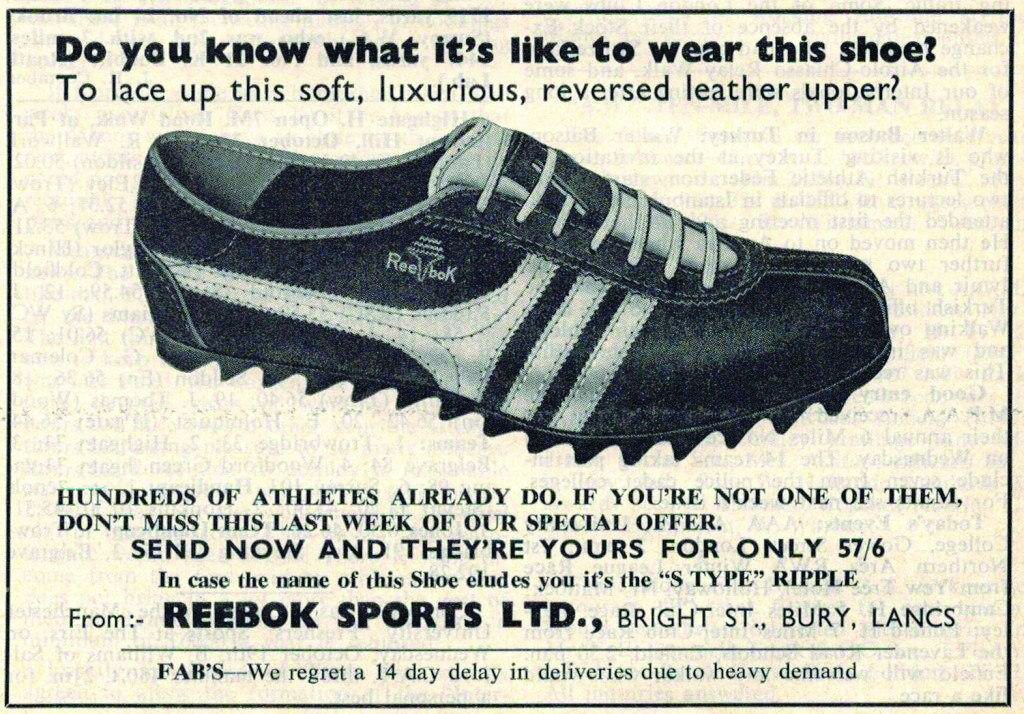
TM: And he invented the running spike?
JF: He decided to put spikes in running shoes because his father used to repair cricket boots. They had little studs in the bottom of them. Something went off in his mind, he was a runner for Bolton Primrose Harriers. He wasn’t the best runner, but he thought if I put spikes in the bottom of my shoes maybe I can do better. And he did. That was the start of his business. So, maybe he did invent the spikes, he certainly invented the training shoe as well.
We had a 1920s letterhead, down both sides of it were 96 teams listed that he supplied. There’s only Tottenham Hotspur that aren’t on the list out of all the teams that included Celtic Rangers, Man United, Man City, Arsenal, Everton. He supplied them all. Of course by the time Jeff and I left the business, Adidas more or less had a strangle hold on football. That’s why we went into athletics. We didn’t need a load of money to persuade athletes to buy off us.
TM: I wanted to talk about America because obviously that was massively key to Reebok becoming the brand behemoth it became. It was was a tough nut to crack. You had help initially from different salesmen, but it was Paul Fireman who eventually made things happen.
JF: He did. My first trip to the States was in 1968. And I didn’t get a distributor until 1979. I knocked on those doors for eleven years, I had at least six attempts, with different people. Honestly, it took a long time for me to realise that what we needed was the hook. We needed people to want to buy our shoes rather than us trying to sell our shoes. This is what makes a difference. And this is where the influencers come in. If you’ve got a good influencer, the people want that same product.
For me it was Runner’s world. Runner’s world, they grew at the same time that running with growing. It’s probably the biggest influence in running becoming so popular. Of course Nike grew off the back of that. They eventually got around to trying to tell everybody what shoe you should buy. They started out by saying the number one shoe is… and it was a Nike shoe at the time. Everybody wanted to buy that shoe.
In America we’ve got 350 million people. Probably 50 million of those were running. You can imagine the order book at Nike when this shoe was made number one. They were importing shoes from Japan. Can you get an increase in volume? No. It took them almost 12 months to sort of get there. By that time Runners World is telling everyone about a different shoe.
The trade was absolutely distraught with what was going on. Eventually Runners World were persuaded that instead of putting a number one shoe out there, to give star ratings. If you got a five-star shoe that was like getting an award shoe. I knew how to make a five-star shoe. That’s one of the things that’s not luck. Good fortune maybe, but not luck. We knew how to make that five-star shoe.
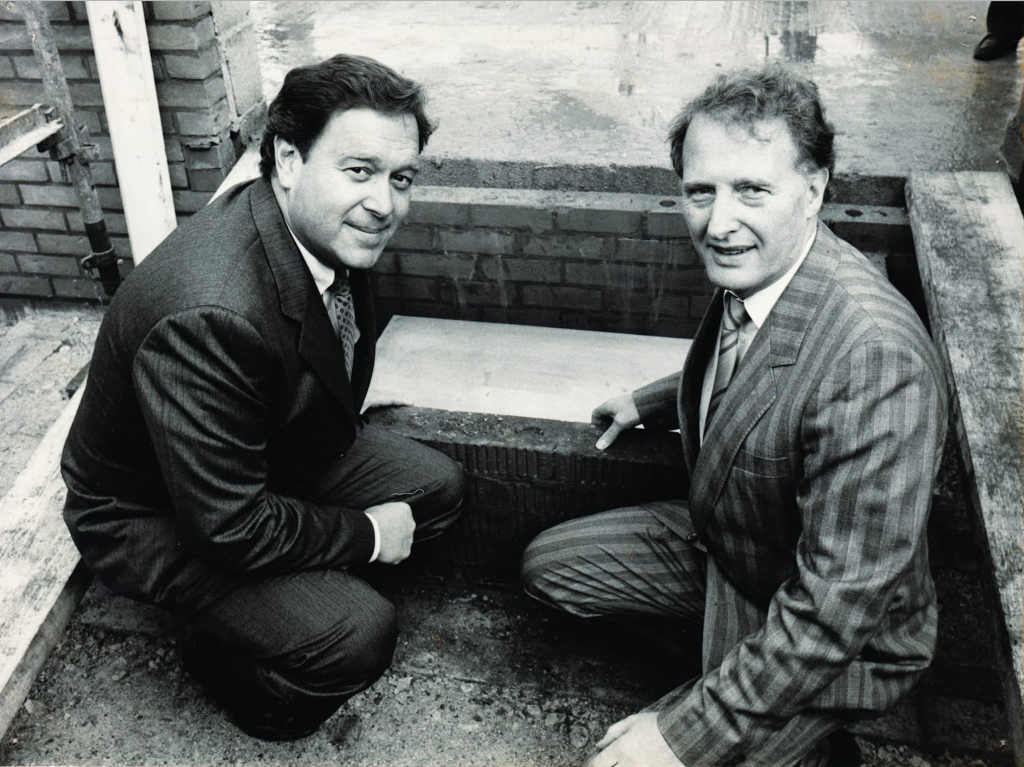
TM: And that 5-star shoe was the Aztec?
JF: It was the Aztec. That was the one. That was the hook. And it was Paul Fireman that came along. That was in 1979, the same year that Kmart came along and wanted 25,000 pairs of shoes. I didn’t want to deal with a company as big as Kmart. That 25,000 order of shoes may have been our last.
Paul at the time was running Boston Camping. A small outdoors company which he ran with his brother and his brother in law. I could tell when we were first talking that he was tired of going around the same loop. He’d been selling tents and fishing rods for probably 10 years or more. He said he’d love to be our distributor, but to do that he needed a 5-star shoe. I showed him the Aztec and he loved it. He said, “brilliant, but it’s not a five-star shoe yet”. He said we’d have to wait till August. This was in February.
The magazine came out at the end of July. I called him around that time and told him to nip down to the local magazine kiosk as Runners World was due to be out. An hour later he rang me back excitedly and said, “Aztec, 5-stars!” That was it. The moment in your life where you break through the tape and it’s a win. We also had two other shoes that got top marks. One was a road racing shoe, the other one was a spiked track version. So in three categories we got three 5-star shoes. That was our entry into America.
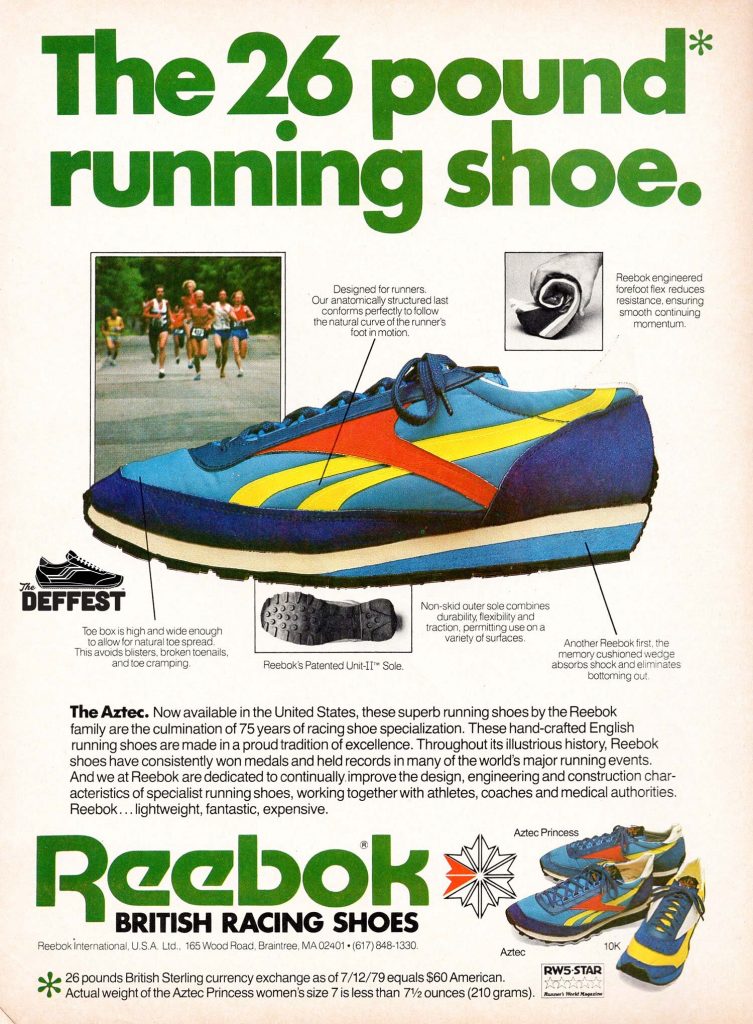
I thought this would just be part of Boston Camping, but when I next went to Paul’s office, Boston Camping no longer existed. They’d all decided to quit the business and sell it. He’s taken one of the salesmen and a girl from the office. He had a bit of money but not much, he was like me, we were pretty much hand to mouth. That was the start.
The first thing we need was some money. Steve Rubin came a long at that point. He provided Paul with a credit line. It’s ok going to the Far East, but you’ve got to have the money. You have to put a letter of credit up there, or your bank has to sort of say they’ll pay it if you don’t have the money. So, it was good we got Steve onboard. He’s Pendland Group, he’s JD Sports. I think he’s the highest tax payer in the UK. Which is not a bad thing (laughs)!
The story really started with Angel Martinez. He was our tech rep down in California, whose wife was going to these aerobics classes. He asked her what it was one day and he told her it was exercising to music. So he went down with her next time and saw the instructor wearing trainers, half the class wearing trainers, the rest not wearing any shoes at all, just barefoot. For Angel that was a lightbulb moment. He decided they needed specialist shoes.
Off he went down to Boston to have a word with Paul. Paul was like, “we’re a running company, we’re really not interested in making shoes for whatever this is”. Angel insisted, not with Paul. Paul told him to forget it for the while. But he went around to the backdoor and saw Steve Liggett. Steve was in charge of production. He described to Steve just a nice plain white leather upper, and a nice cushion sole. They made it on this woman’s last, which they had to change when we really grew as most women’s feet are much broader than that.
The point is that when he got these trainers they just went viral. Jane Fonda bought a pair of Reeboks, she was making her exercise videos at the time. The girls loved them so much, they didn’t just use them for the aerobics classes, they were going to work in them, walking about in them. It became street, probably the first real street shoe. We were a $9 million company, it was running nicely. But then it went to 30 million, then to 90 million, to 300 million, to 900 million in four or five years.
TM: You stole a march on Adidas and your competition, as they didn’t see the aerobics market as you guys did …
JF: They didn’t, but there’s also another story to it. Reebok were very small. We were known to a reasonable volume of runners, but not that many. It was a growing company in running. And all of a sudden we came out with this woman’s shoe. These girls had never heard of Reebok, so Reebok became a woman’s shoe. Nike, Adidas, they were male. They were known for sweaty, heavy sports stuff. This Reebok brand was something women could own.
Yes, we did steal a march on them. And yes, probably they did stand back a bit and say it’s just going to be a craze. But of course the company went up to $4 billion sales before I retired. By that time I’d put on another 30 countries around the world. I’d grown the distribution. We had over a billion dollars for the rest of the world. America had grown to $3 billion.
With Paul, the best person to do anything in America was actually in America. He knew the market. He spoke the same language. It was essentially leave it to Paul. We had an arrangement that he would look after America, I’d get on with the rest of it. He had Canada and Mexico, because they were countries that bordered onto America. He didn’t want trans-shipping, he didn’t want us pushing stuff into Canada or Mexico, which would find its way into the USA, people do that. I looked after Latin America and the rest of the world.
I was flying around the world three times a year. And then we ended up with Hollywood coming to Monte Carlo. It was very exciting, being with Frank Sinatra in Monte Carlo and others like Roger Moore and Sean Connery. All nice people.
TM: It must have been surreal? All these celebrities suddenly everywhere. And of course the trainers popping up in huge films like Alien.
JF: It was incredible. But it went on at such a speed that everything happened and you had to be there. You didn’t have the time to stand back and think isn’t this great? It was moving all the time. It was a fantastic time, but I decided after being at 35,000 feet for most of my life, with limos from every airport, the best hotels in town, the best restaurants, it was fabulous, but it was time to get off this.
We had a handful of lawyers and accountants and loads and loads of people in between marketing. By that time, I think the challenge had gone for me. It was a bit like being the Queen, sitting there waving. Okay, it’s nice to be an ambassador, but it was time to get off that and relax. That’s what we do now. We relax.
TM: I think you’ve earned it. In terms of the trainers themselves, we’ve mentioned the Aztecs and the World 10, but is there a favourite pair of Reebok shoes that you made?
JF: I think you’ve mentioned them both. Both of those shoes were very significant. The World 10 shoes were great, they were Ron Hill’s idea. Unfortunately Ron passed on recently. It was the World 10 mile record that he broke. He won many marathons, he won the Boston marathon in record time in 1960. I think those were the two.
We’ve had many different shoes, but manufacture and design moves on. When you become that size of company there are a lot of people involved. Of course there were the Freestyles. They took Reebok from a very small company of 9-10 million dollars to a billion, then onto four billion. Ok, we broadened the company, we were doing football by that time and a lot of American sports like baseball and basketball that we grew into. But the main thing was that aerobics growth.
TM: We always like to finish by asking for piece of wisdom or perhaps you’d like to share one of the sort of main lessons you learned from the journey you went on creating Reebok?
JF: If you have an idea and you want to do something, the best thing is just get on and do it. Get on with it. If you ask too many questions, or seek too much advice, you’ll never do it. I look back now and think, how did you do that? I couldn’t do that now. These days we have marvellous technology, and that’s moving things on fantastically. Be an entrepreneur if you wish, but do it when you’re young. That’s when you can make mistakes and it doesn’t matter. That mistake is only a step in your journey. It’s a lesson that you learn.
So, don’t listen to too many people if you have an idea. It’s up to you. Take that step. Give it a try. If you’re young, and you should be young if you try these things, it doesn’t matter. It’s a very valuable lesson if you find that you fall flat on your face. We had a lot of lessons, a lot of times where we should have failed, but we just kept going. You have to keep going. And also, don’t think too deeply.
Shoe Maker by Joe Foster, published by Simon & Schuster is out now
Click the banner to share on Facebook
